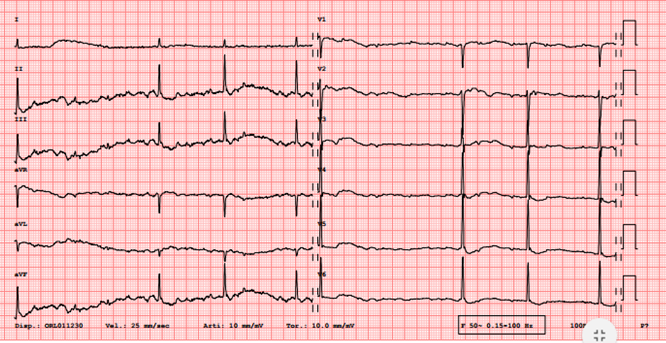Keywords
oleander poisoning, digoxin, digoxin-specific antibody fragments, phytobezoar
Abstract
Nerium oleander is a plant containing cardiac glycosides, and intoxication with its leaves is a medical emergency. We report the case of a 73-year-old man who took a decoction of oleander leaves for a reckless purpose. Upon arrival in the emergency room, he presented an altered state of consciousness, drooling and vomiting. He was bradycardic with intermittent third- degree atrioventricular block and typical downsloping ST-segment depression related to glycosides toxicity. Despite initial treatment with atropine, isoprenaline and repeated bolus of digoxin-specific antibody (Fab) fragments, symptoms were persistent 12 hours after admission. Suspecting that the patient not only drank the decoction but also ingested the leaves and had slow gastric emptying, we performed gastric lavage without benefit. We subsequently performed a gastroscopy that showed an oleander phytobezoar, and its removal permitted a rapid clinical improvement.
Treatment with digoxin-specific antibodies for intoxication is well described and dosage should be adapted to the plasmatic level. Such an examination is useless in oleander intoxication because it does not represent the real quantity of toxin. The dosage of antibodies is empiric and should be guided by the clinical severity.
In such intoxication, the presence of a phytobezoar from oleander leaves cannot be excluded so we believe that a gastroscopy for its mechanical removal should always be considered to avoid persistent release of toxin.
References











